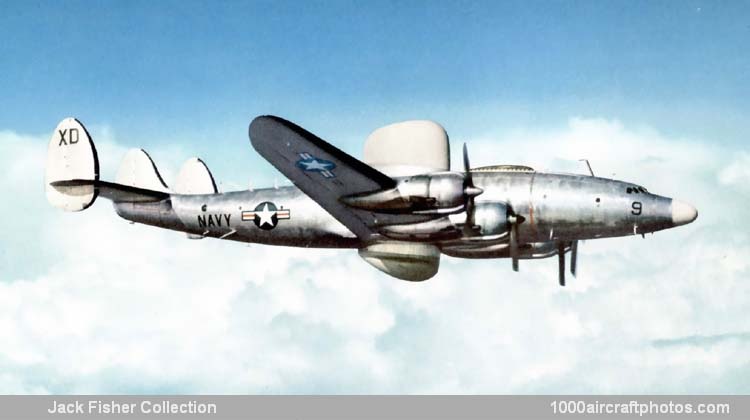05/31/2010. Remarks by Johan Visschedijk: "To meet a Navy requirement for an AEW (airborne early-warning) aircraft capable of carrying large and heavy radar systems and of functioning as an aerial CIC (combat information center), project engineer M. Carl Haddon's team undertook in June 1948 the modification of the Model 749A. Main detection equipment consisted of two large radome-housed systems, one beneath the center fuselage, with adequate clearance being provided by the Constellation's tall landing gear, and one atop the fuselage.
Moreover, its triple-tail configuration was anticipated to result in better directional control than the single-tail configuration of a proposed version of the Douglas DC-6. Additional detection, electronic countermeasure and communications antennae, for a total of 140, were distributed throughout the aircraft. The electronic equipment was installed on the main deck and in underfloor compartments. Primary crew included five flight personnel, as well as a CIC officer and four operators, while accommodation for a ten-man relief crew was provided for long-endurance missions.
The first of two PO-1W AEW aircraft ordered (BuNos. 124437, 124438 c/n 749-2612, 749-2613) was flown at the Lockheed Air Terminal on 9 June, 1949, by Joe Towle, Roy Wimmer and Charles Mercer. After its fins and rudders had been heightened by 18 in (0.46 m) to overcome directional 'stubbornness' caused by the huge height-finder radome atop the fuselage, it is pictured here during a manufacturers flight test, prior to delivery to NAS Patuxent River, Maryland, in August 1949.
The second PO-1W was delivered in December 1950 and the two aircraft proved their worth during NATO maneuvers in 1951-1952 (Operations Mainbrace and Mariner). Powered by four 2,500 hp Wright 749C-18BD-1s, the PO-1Ws were redesignated WV-1s in 1952. After serving as prototypes for the PO-2W (WV-2) version of the Super Constellation, the WV-1s had their electronic equipment removed and were sold to the Federal Aviation Agency, with which they were registered N119 and N120, before being transferred in 1966 to the USAF for special tests. With the delivery of the second PO-1W in December 1950, the production history of the twenty-seven military Constellations came to an end."
